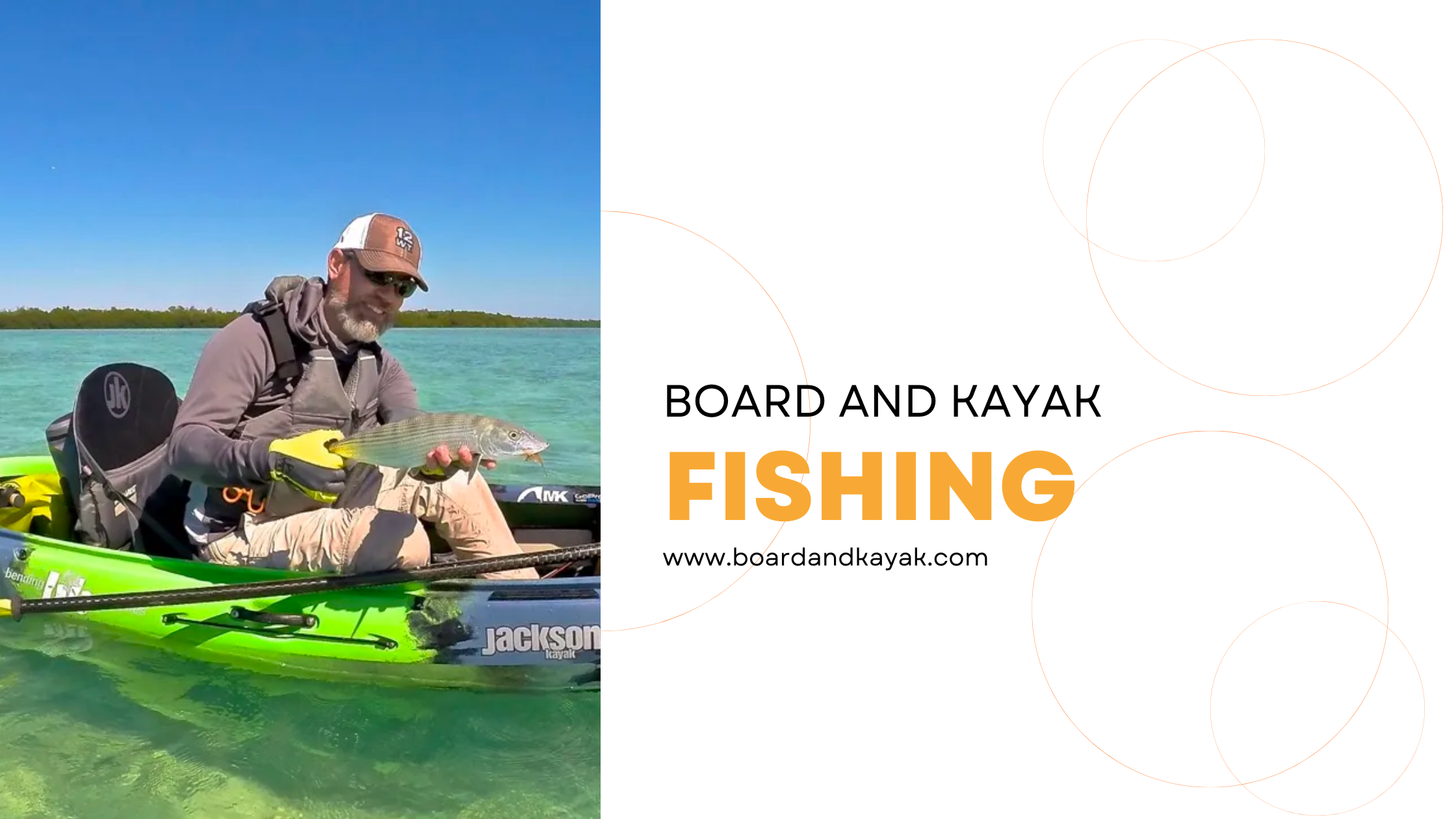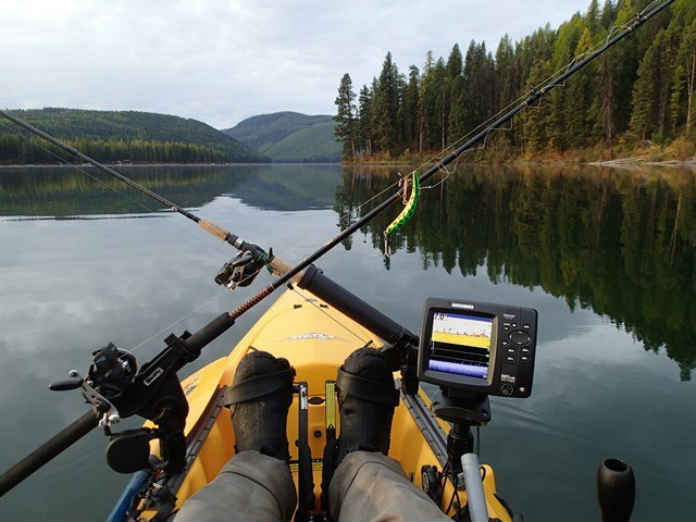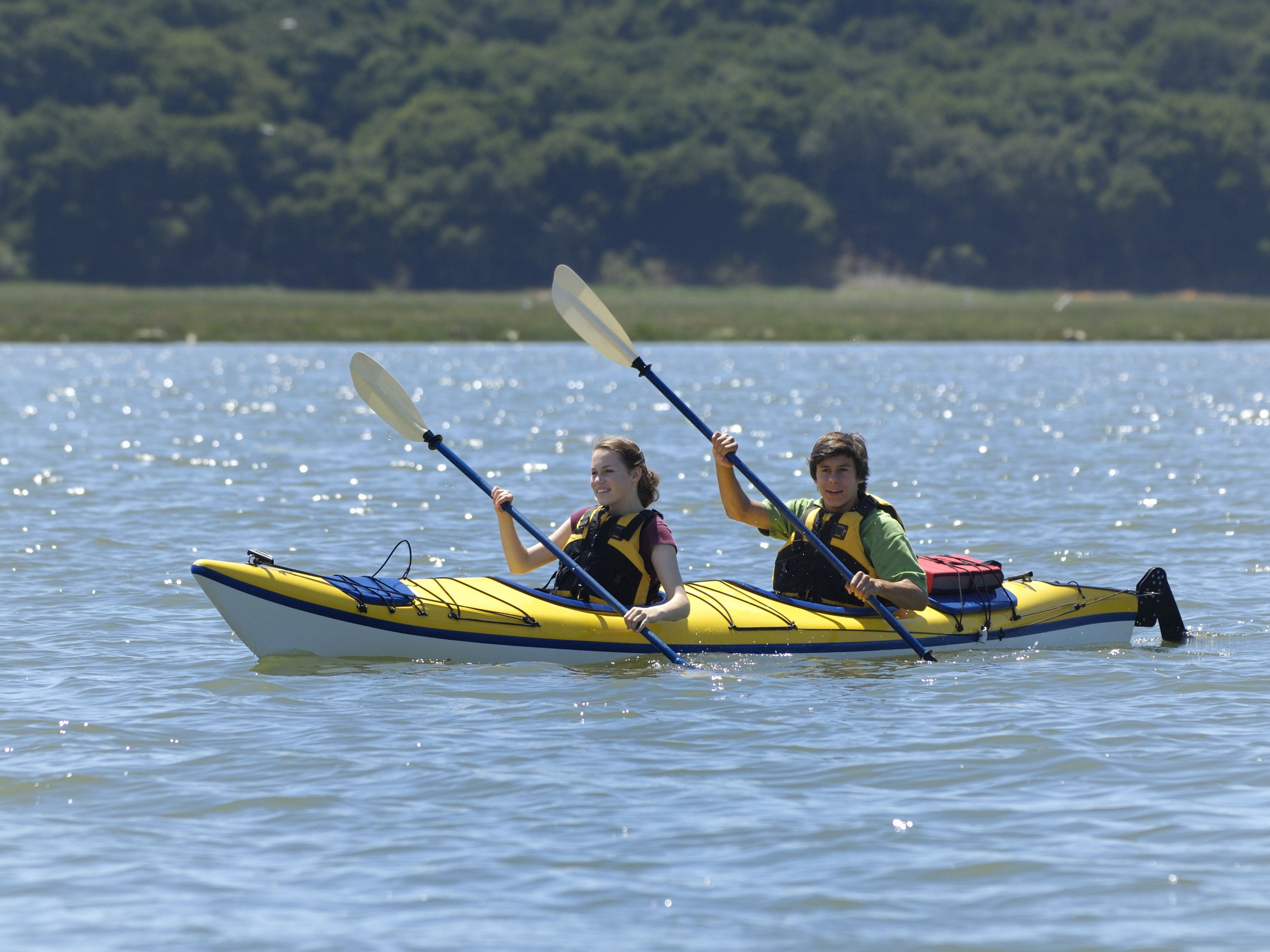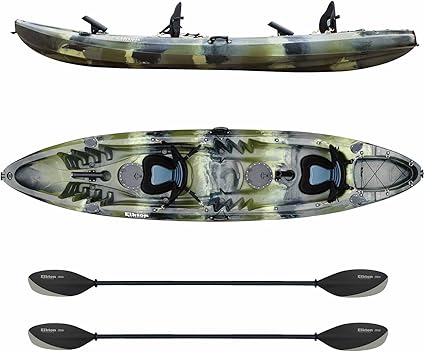
Kayak Fishing Bucket List Destinations
Kayak fishing is not limited to small, local ponds or lakes. These vessels can be used to fish almost any body of water, from large rivers to great lakes.
In addition, kayak fishing offers so many benefits that a larger vessel cannot match. We're now talking about the best places where you can go kayak fishing. Kayaks are great because they can go almost anywhere, they have access to water that boats cannot and they are also cheaper. Something about each of these destinations makes it worthy of being on a bucket list.
Let's break down what makes it a great kayak spot, how to fish it, and what kind of fish you can expect to catch.
We will discuss the following spots:
- Shenandoah River
- Wando River
- Toledo Bend River
- Sunset Bay State Park
- Susquehanna River
- Lake Estes
- Devil’s Rivers
- Kona Coast
- Lake Erie
- Pompano Beach
Let's start!
Shenandoah River
Virginia is where most of the Shenandoah River flows. Beginning in the southeast corner of West Virginia near Charlestown, it moves south and crosses the border into Virginia. The water snakes its way through the state's western half through the Shenandoah Valley.
In West Virginia and Virginia, there are several docks along the river from which you can launch. It is possible to determine precisely how long you want to spend on the water at over 20 public access spots on the south fork alone. There are areas where you can ride for 3 hours if you only have time for that. Weekend camping and float trips are also possible.
Here you can catch smallmouths, largemouths, panfishes, catfishes, crappies, and you may even find muskellunge. The Shenandoah has one of the best smallmouth fisheries in the state, and the smallmouth is the most popular gamefish on the river. When the bass is active in the fall and spring, you'll be able to catch these on crawfish and moving bait pretty much all year long.
This river offers beautiful views. As you kayak through the valley, mountains surround you on either side as you float close to the water. As well as class I rapids, you can also enjoy them from your kayak.
Wando River
The Wando River, north of Charleston, South Carolina, is a great spot to catch redfish and speckled trout. Even though the Wando is not a very large river, it provides excellent habitat for fish, as it has creeks, ledges, and plenty of structure.
You can launch a kayak from a few feeder creeks and several spots on the main river. The following are a few spots.
- Remley’s Point Public Boat Landing.
- Hidden Cove Boat Landing.
- Dunes West Boat Ramp.
- Paradise Island Public Boat Landing.
You can catch speckled trout and redfish on shrimp most of the year, and lures and live shrimp are acceptable.
There will be a lot of fish feeding in ambush spots where the current is going upstream. Pay attention to oyster beds, grassy points, and pilings. Once the water temperature reaches the high 60s or 70s, it's time to start throwing topwater plugs. Find out which ones the fish are keying on that day by experimenting with a few different ones. The trout are susceptible to these.
With a kayak, you can easily meander through the backwater creeks that connect to the Wando, and you can easily maneuver your kayak into areas where there might be fish hiding.
Toledo Bend Reservoir
Fishing for panfish and largemouth bass is excellent in this reservoir located on the Texas-Louisiana border. In addition to being abundant, fish can also be relatively large. Because the southern winters are mild, you can catch fish.
Kayakers can launch their kayaks from multiple locations. Whenever possible, locate a beach with a parking lot and a public shoreline. Many beaches have boat launches as well. Anglers typically target largemouth bass, but striped bass is also present. Because of their size, these are popular fish. You can paddle back into the narrow creek channels on this reservoir by using a kayak. It is perfect for catching bass that is either spawning shallow or leaving their spawning areas for deeper waters.
Sunset Bay State Park
The area is on the Oregon coast, the perfect location for anglers seeking calm ocean water to fish in. Floating is accessible along the park's coves if you use an excellent, stable saltwater kayak. Depending on the depth of the water, you may find lingcod, Cabezon, and even halibut.
You are welcome to launch your kayak at any beach location with public parking. Anglers can catch lingcod in coves, but deeper waters are where they like to hang out.
There are many different ways to catch lingcod if you try to see them. For example, you can use mackerel as live bait. It would be best to let your bait free fall to the bottom after you hook it through the nose. As soon as your weight hits bottom, give your reel a few turns and allow your bait to suspend freely. Consider jigging your live lure on days when strikes are hard.
Susquehanna River
As well as Pennsylvania, parts of New York and northern Maryland run along the Susquehanna. Kayaks, canoes, or other small boats do well on the river because it is not conducive for the large motorized craft.
The kayak angler can float over the shallow portions of the river and can maneuver around any rocky edges that may protrude from the river. The area is ideal for kayak fishing. Smallmouth fisheries in the Susquehanna are among the best in the US, especially in the Northeast. Lake-born smallmouths may not grow to the same size as these fish, but they are just as aggressive. Smallmouth bass is used to fight currents so that a 3-pound fish can lead to a lifetime of fights.
Catching smallmouth is always easy with crawfish, and Spinnerbaits, swimbaits, and fly-fishing tackle are all excellent options. Getting out on the river and seeing a big fish is best done in the fall and spring.
Lake Estes
Lake Estes provides beautiful scenery and great fishing in Rocky Mountain National Park just north of Denver. Kayaks can easily cover a lot of water in 185 acres of water. It's a good thing that there's a marina nearby if you don't have one. Lake Estes is known for trout fishing, and the two most common types are rainbows and browns. Although Tiger Muskie did not exist in 2013, 2014, or 2015, they stored it in 2016.
Flies, spinners, and power bait work well for catching trout, while lures with larger and soft bodies work well for catching muskies. A portion of your catch is also yours to keep. Each person is allowed four trout per day, and you may keep one Tiger Muskie over 36 inches.
Devil’s River
The Devil's River winds its way through Texas, a journey not for the faint of heart. Kayak anglers can take advantage of the remote location with few access points. Rapids and pools make up the first 94 miles of this river. Thus, shallow and deep pools within the river connect by rapids.
It is surprising to find so many smallmouth basses in the river, but they are plentiful. Due to the river's spring-fed nature, it is one of the southernmost places in the United States to catch smallmouth bass. While topwater lures work best in the morning and evening, subsurface lures work best during the day. If you're looking to catch fish, throw jerk baits and wacky-rigged soft plastics.
Kona Coast
On Hawaii's big island, there is the Kona Coast. Within a mile of the coast, there are steep drop-offs, and people pull monsters out of the deep water. You launch from the harbor, and if your kayak has a depth finder, you'll be surprised how quickly the drop-off occurs. Some places along the shore have water as deep as 300 feet.
Tuna is the most common game fish caught here, but billfish are also common. The most common way to see them is with live bait, and typically, this jigs with hooks.
Lake Erie
In addition to bordering Pennsylvania, Ohio, Michigan, and New York, Lake Erie is not your typical lake. You may feel like you're going into an ocean rather than a freshwater lake from the shore. If you get permission from a landowner, you can launch from their property on the lake, although there are several boat launches where you can take your kayak.
Smallmouth fishing is popular in Erie. The most effective method of catching these fish is with the drop shot rig. You can fish this rig in shallow or deep waters, and you can use your sonar to search for deep brush piles and drop-offs where fish will be waiting to ambush prey.
Pompano Beach
Anglers can enjoy year-round fishing at Pompano Beach, a fishing destination on Florida's East Coast. Many public access points allow kayaks to launch from the beach, and while there, you might be lucky enough to catch a wahoo.
You could hook into not only a wahoo but also a Mahi Mahi and a sailfish. The most popular techniques for catching these fish seem to be trolling live bait and jigging. Hang on tight because this fish will take you for a ride when you look into it.
Finale
Perhaps some of the places listed above have inspired you to travel yourself. If any of these places are within a few hours of your home, it might be worth checking it out for yourself. Do you agree? Are there any places you think should have been included on this list? Tell us in the comments!


























